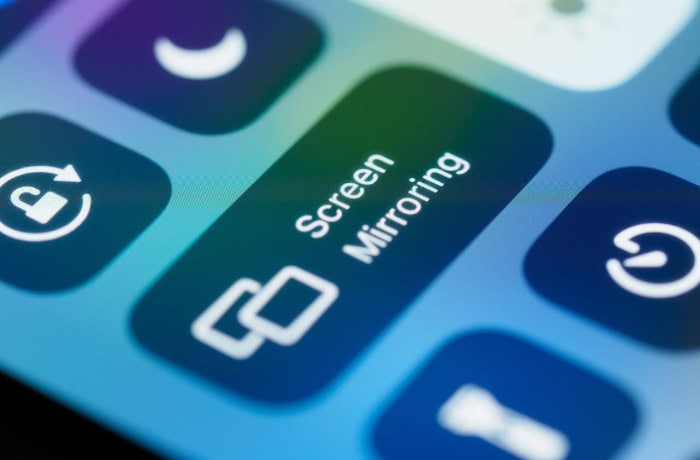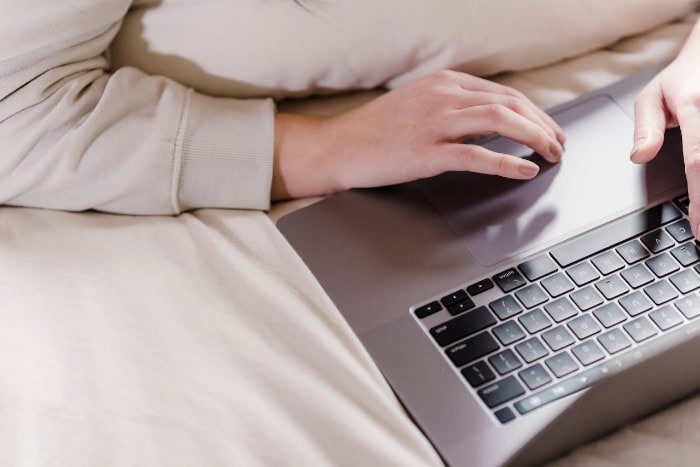What Is Wi-Fi Direct? Connect and Share in Seconds

Connecting devices has never been easier, thanks to Wi-Fi Direct, a technology that enables direct communication between devices without the need for a traditional network. In a world where convenience and speed are paramount, Wi-Fi Direct stands out by allowing smartphones, tablets, printers, and more to interact seamlessly.
This capability not only enhances file sharing but also supports activities like wireless printing and screen mirroring, making it a valuable tool in everyday life.
Definition and Functionality
Wi-Fi Direct functions as a bridge between devices, allowing them to communicate directly without intermediary hardware. It is designed to facilitate easy and fast connections for various applications.
For instance, users can transfer photos from their smartphones to a friend's device or print documents wirelessly without needing a router. This technology is particularly useful in scenarios where establishing a traditional network would be cumbersome or impractical.
In comparison to traditional Wi-Fi networks, which rely on routers to manage connections and traffic, Wi-Fi Direct simplifies the process by enabling devices to connect directly. This means that multiple devices can communicate with each other without the need for an external network infrastructure.
The result is a more streamlined experience that enhances the usability of devices in everyday situations.
How Wi-Fi Direct Works
The connection process with Wi-Fi Direct begins with one device acting as the “Group Owner,” similar to a host in a traditional network setup. This device manages the connection and facilitates communication between other devices that join the group.
The initial setup often involves one device sending an invitation to another, which can be done through various means such as NFC (Near Field Communication) or manual entry of a passcode.
Once connected, Wi-Fi Direct employs specific protocols to establish and maintain communication between devices. These protocols ensure that data is transferred efficiently and securely.
The technology supports high-speed data transfer rates comparable to standard Wi-Fi connections, making it suitable for tasks that require substantial bandwidth, such as streaming video or transferring large files.
Applications of Wi-Fi Direct

Wi-Fi Direct has a wide range of applications that enhance user convenience and improve connectivity between devices. From file sharing to gaming, this technology provides versatile solutions for everyday tasks.
As more devices adopt Wi-Fi Direct capabilities, its usefulness continues to grow, allowing users to interact with their technology in more dynamic ways.
File Sharing
One of the primary uses of Wi-Fi Direct is for file sharing between devices such as smartphones, tablets, and laptops. This technology allows users to transfer photos, videos, music, and documents quickly and easily without the need for cables or an internet connection.
For instance, if two friends want to share a collection of vacation photos, they can connect their devices directly via Wi-Fi Direct and initiate the transfer in seconds.
This method is particularly advantageous when dealing with large files that would take considerable time to upload and download over a traditional network. The high-speed data transfer capabilities of Wi-Fi Direct ensure that files can be sent efficiently, making it an ideal choice for users who frequently share multimedia content.
Additionally, because it operates independently of internet access, users can share files even in areas with poor connectivity.
Wireless Printing
Wi-Fi Direct also simplifies wireless printing by enabling direct communication between mobile devices and printers. Users can print documents or images from their smartphones or tablets without needing to connect through a router.
This feature is especially useful in home or office environments where multiple devices may need to access a single printer.
To print using Wi-Fi Direct, a user simply selects the printer from their device’s settings and establishes a connection. Once paired, printing tasks can be sent directly to the printer without any complicated setup or configuration.
This not only saves time but also reduces the clutter of cables often associated with traditional printing methods. As a result, users enjoy a more streamlined printing experience that enhances productivity.
Screen Mirroring
Another popular application of Wi-Fi Direct is screen mirroring, which allows users to display content from their devices on larger screens such as TVs or projectors. Applications like Miracast utilize Wi-Fi Direct technology to establish a connection between devices without requiring an internet connection.
This capability is particularly beneficial for presentations, watching videos, or sharing photos during gatherings.
To use screen mirroring, a user simply selects the appropriate option on their device and connects to the target display. Once connected, everything displayed on the mobile device screen appears on the larger screen in real-time.
This feature not only enhances entertainment experiences but also makes it easier to collaborate during meetings or group activities by sharing content effortlessly.
Gaming Connections
Wi-Fi Direct has significant implications for gaming as well, particularly in facilitating multiplayer connections between consoles and mobile devices. Gamers can connect their devices directly for local multiplayer sessions without needing an external network or internet access.
This feature enhances gameplay by reducing latency and improving connection stability.
For instance, players can engage in competitive gaming on consoles by connecting directly with friends’ devices nearby. This direct link allows for smoother gameplay experiences compared to traditional online gaming setups that may suffer from lag due to internet speed fluctuations.
Additionally, many mobile games support Wi-Fi Direct for quick matchmaking and cooperative play, making it easier for friends to join in on the fun without complicated setup processes.
Benefits of Wi-Fi Direct

Wi-Fi Direct offers several advantages that enhance user experience and connectivity between devices. As technology continues to evolve, the benefits of this protocol become increasingly relevant for everyday tasks.
From high-speed data transfer to the ability to connect multiple devices without the need for a router, Wi-Fi Direct presents a compelling option for users looking to simplify their digital interactions.
High-Speed Data Transfer
One of the standout features of Wi-Fi Direct is its ability to facilitate high-speed data transfers. Wi-Fi Direct can achieve transfer rates exceeding 250 Mbps under optimal conditions.
This significant difference makes Wi-Fi Direct a superior choice for transferring large files, such as videos or high-resolution images, quickly and efficiently.
The speed advantage is particularly noticeable when sharing multimedia content or conducting tasks that require substantial bandwidth. For example, transferring a full-length movie from one device to another can take mere seconds.
No Internet Required
Wi-Fi Direct operates independently of internet access, which is one of its most appealing aspects. Users can connect devices directly without needing a router or an active internet connection.
This feature is especially beneficial in situations where internet access is limited or unavailable, such as during travel or in remote locations.
The ability to connect without a network means that users can share files, print documents, or stream media even in areas with poor connectivity. For instance, two friends on a camping trip can easily share photos taken during their adventure without worrying about finding Wi-Fi or using mobile data.
Multiple Device Connections
Wi-Fi Direct supports one-to-many connections, allowing multiple devices to connect to a single host device simultaneously. This capability opens up various practical applications, particularly in collaborative settings.
For example, in a classroom or meeting room, one person can connect their laptop to a projector while others share content from their smartphones or tablets.
This feature enhances group activities by enabling everyone to participate actively without needing individual connections to a central network. Users can easily share presentations, documents, or media files with each other in real-time.
Backward Compatibility
Another significant benefit of Wi-Fi Direct is its backward compatibility with older Wi-Fi devices. This means that even if some devices do not support the latest wireless standards, they can still connect through Wi-Fi Direct if they are equipped with basic Wi-Fi capabilities.
This compatibility ensures that users can take advantage of Wi-Fi Direct features without needing to upgrade all their devices at once.
For instance, if someone has an older smartphone and a newer printer that supports Wi-Fi Direct, they can still establish a connection and print documents wirelessly.
Challenges and Limitations

While Wi-Fi Direct offers numerous advantages, it is not without its challenges and limitations. Users should be aware of potential security concerns, power consumption issues, and compatibility problems that may arise when connecting devices.
Security Concerns
Security is a significant concern with any wireless technology, and Wi-Fi Direct is no exception. Since devices connect directly to one another, there is a risk of unauthorized access if proper security measures are not in place.
Potential vulnerabilities can arise from weak authentication protocols or improper device configurations, allowing malicious actors to intercept data or gain control over connected devices.
To mitigate these risks, it is essential for users to employ strong passwords and ensure that their devices are updated with the latest security patches. Wi-Fi Direct supports various security protocols, including WPA2, which provides robust encryption for data being transmitted between devices.
Users should also be cautious about connecting to unknown devices and avoid sharing sensitive information unless they are confident in the security of the connection.
Power Consumption
Another consideration when using Wi-Fi Direct is power consumption. While this technology enables high-speed data transfers and direct connections, it can also lead to increased battery usage on mobile devices.
The energy required for maintaining a Wi-Fi Direct connection can be higher than that of Bluetooth, particularly during prolonged use or when transferring large files.
For users who rely heavily on their mobile devices throughout the day, this increased power consumption may pose a challenge. It is advisable to monitor battery levels and consider using Wi-Fi Direct primarily for tasks that require fast data transfer rather than for extended periods.
Additionally, users can optimize battery life by disconnecting from Wi-Fi Direct when not in use or by utilizing power-saving modes available on many devices.
Compatibility Issues
Compatibility can present challenges when using Wi-Fi Direct, particularly when connecting devices from different manufacturers. Not all devices support the same versions of Wi-Fi Direct or may implement the technology differently.
This inconsistency can lead to difficulties in establishing connections or transferring data between devices.
Users may encounter situations where their smartphone can connect to one printer but not another due to differences in how each device handles Wi-Fi Direct protocols. Additionally, older devices may lack full support for newer features introduced in recent updates of the technology.
To minimize compatibility issues, it is beneficial for users to check device specifications before attempting to connect and ensure that all involved devices support the necessary standards for Wi-Fi Direct.
Comparison with Other Technologies

Wi-Fi Direct is one of several wireless technologies available for connecting devices, each with its own strengths and weaknesses. Comparing Wi-Fi Direct to alternatives like Bluetooth, traditional Wi-Fi, and NFC (Near Field Communication) can provide valuable insights into when to use each technology.
Wi-Fi Direct vs. Bluetooth
Wi-Fi Direct and Bluetooth are both popular methods for connecting devices wirelessly, but they differ significantly in terms of speed, range, and typical use cases.
In terms of speed, Wi-Fi Direct typically outperforms Bluetooth by a considerable margin. While Bluetooth offers transfer speeds up to 3 Mbps, Wi-Fi Direct can achieve speeds exceeding 250 Mbps under optimal conditions.
This difference makes Wi-Fi Direct a better choice for transferring large files or streaming high-definition content.
Range is another area where Wi-Fi Direct has an advantage. Bluetooth connections generally operate effectively within a range of about 30 feet, while Wi-Fi Direct can maintain connections over distances of up to 300 feet or more, depending on the environment.
This extended range allows users greater flexibility in how they connect and interact with devices.
In terms of use cases, Bluetooth is often preferred for low-power applications such as connecting headphones or fitness trackers, where lower data rates are sufficient. Conversely, Wi-Fi Direct is more suitable for tasks that require higher bandwidth, such as file sharing between laptops or streaming video to a TV.
Wi-Fi Direct vs. Traditional Wi-Fi
While both Wi-Fi Direct and traditional Wi-Fi enable wireless connectivity, they serve different purposes and are suited for different scenarios. Traditional Wi-Fi relies on a central access point, such as a router, to manage connections among multiple devices.
This setup is ideal for providing internet access to several devices simultaneously.
On the other hand, Wi-Fi Direct allows devices to connect directly without an intermediary router. This direct connection can be advantageous in situations where setting up a traditional network is impractical or impossible.
For example, during outdoor activities or in temporary setups like meetings or presentations, users can quickly connect devices without needing to establish a full network.
Additionally, traditional Wi-Fi is better suited for scenarios requiring internet access for multiple users or devices. If several people need to browse the web or stream content simultaneously, traditional Wi-Fi provides the necessary infrastructure.
However, if the goal is simply to share files or connect peripherals without internet access, Wi-Fi Direct offers a more efficient solution.
Wi-Fi Direct vs. NFC (Near Field Communication)
NFC is another wireless technology that often comes into play when discussing device connectivity. While both NFC and Wi-Fi Direct enable device pairing and communication, they operate under different principles and are suited for distinct use cases.
NFC is designed for very short-range communication, typically requiring devices to be within a few centimeters of each other to establish a connection. This makes NFC ideal for quick interactions like mobile payments or pairing devices with a simple tap.
For example, users can easily make payments at retail locations by tapping their smartphones against an NFC-enabled terminal.
In contrast, Wi-Fi Direct allows for longer-range connections and higher data transfer speeds. It is better suited for tasks that involve larger files or require sustained connections over greater distances.
For instance, if someone wants to transfer a video file from their smartphone to a laptop while sitting across the room, Wi-Fi Direct would be the preferred option.
Conclusion
Wi-Fi Direct stands out as a versatile and efficient technology that enhances how devices connect and communicate. Its ability to facilitate high-speed data transfers, operate without an internet connection, and support multiple device connections makes it a valuable tool in various scenarios.
While challenges such as security concerns, power consumption, and compatibility issues exist, the benefits often outweigh these drawbacks for many users.
Comparisons with other technologies like Bluetooth, traditional Wi-Fi, and NFC highlight Wi-Fi Direct's unique advantages in speed and range, making it particularly suitable for tasks requiring substantial bandwidth. As more devices adopt this technology, its relevance in everyday digital interactions continues to grow.


